Technology
The Best Noise-Canceling Headphones

The Best Noise-Canceling Headphones
In today’s fast-paced world, noise-canceling headphones have become an essential tool for anyone seeking to escape the hustle and bustle of daily life. Whether you’re a frequent traveler, a busy professional, or simply someone who enjoys high-quality audio, noise-canceling headphones offer unparalleled audio experiences by reducing unwanted ambient sounds. This article delves into the best noise-canceling headphones available in the market, examining their features, performance, and overall value to help you make an informed decision.

Pexels.com
Key Features of Noise-Canceling Headphones
Active Noise Cancellation (ANC)
Active Noise Cancellation is a key feature of high-quality noise-canceling headphones. This technology uses microphones to pick up external noises and then generates sound waves that are phase-inverted to cancel out the unwanted sounds. The effectiveness of ANC can vary between models, so it’s crucial to consider this feature when making your choice.
Comfort and Fit
Comfort is paramount for headphones, especially for extended use. Look for features such as adjustable headbands, cushioned ear pads, and lightweight designs. The fit should be snug enough to provide effective noise isolation without causing discomfort.
Battery Life
Battery life is a significant factor, especially if you plan to use your headphones for long periods or during travel. Many noise-canceling headphones offer several hours of playtime with ANC activated, and some models even provide quick charging features.
Sound Quality
High-quality sound reproduction is essential for a satisfying listening experience. The best noise-canceling headphones should offer clear, balanced audio with good bass response and minimal distortion.
Additional Features
Modern noise-canceling headphones come with various additional features such as touch controls, voice assistants, customizable sound profiles, and connectivity options like Bluetooth. These features can enhance the overall user experience.
Top Noise-Canceling Headphones of 2024
Sony WH-1000XM5
Overview
The Sony WH-1000XM5 is widely regarded as one of the best noise-canceling headphones on the market. Building on the success of its predecessors, the WH-1000XM5 offers improved noise-canceling capabilities, superior sound quality, and enhanced comfort.
Features
- Active Noise Cancellation: Advanced ANC technology with adjustable levels.
- Comfort: Plush ear cups and lightweight design.
- Battery Life: Up to 30 hours of playtime with ANC activated.
- Sound Quality: Excellent sound clarity with customizable sound settings.
- Additional Features: Voice assistant support, touch controls, and quick charging.
Bose QuietComfort 45
Overview
The Bose QuietComfort 45 is a flagship model known for its exceptional comfort and effective noise cancellation. Bose has a long-standing reputation for producing high-quality audio equipment, and the QC45 lives up to that legacy.
Features
- Active Noise Cancellation: High-performance ANC with an adjustable mode.
- Comfort: Lightweight and cushioned for long-term use.
- Battery Life: Up to 24 hours with ANC on.
- Sound Quality: Balanced audio with strong bass and clear mids.
- Additional Features: Easy-to-use controls, comfortable fit, and quick charging.
Apple AirPods Max
Overview
The Apple AirPods Max offers a premium experience with its high-end build quality, advanced ANC, and seamless integration with Apple devices. It is designed for users who prioritize both performance and aesthetics.
Features
- Active Noise Cancellation: Advanced ANC with Transparency mode.
- Comfort: High-quality materials and ergonomic design.
- Battery Life: Up to 20 hours with ANC activated.
- Sound Quality: Rich, immersive sound with spatial audio support.
- Additional Features: Seamless integration with Apple devices, digital crown for volume and playback control.
Analysis of Noise-Canceling Headphones
To provide a clearer understanding of how these headphones compare, let’s analyze their key features and performance:
| Feature | Sony WH-1000XM5 | Bose QuietComfort 45 | Apple AirPods Max |
| Active Noise Cancellation | Advanced ANC with adjustable levels | High-performance ANC with adjustable mode | Advanced ANC with Transparency mode |
| Comfort | Plush ear cups, lightweight | Lightweight and cushioned | High-quality materials, ergonomic design |
| Battery Life | Up to 30 hours | Up to 24 hours | Up to 20 hours |
| Sound Quality | Excellent sound clarity, customizable | Balanced audio, strong bass | Rich, immersive sound, spatial audio |
| Additional Features | Voice assistant support, touch controls, quick charging | Easy-to-use controls, quick charging | Seamless Apple integration, digital crown |
Comparative Table
For a more direct comparison, the following table highlights the strengths and weaknesses of each model:
| Criteria | Sony WH-1000XM5 | Bose QuietComfort 45 | Apple AirPods Max |
| Best For | Versatile use, high-quality sound | Comfort and balanced audio | Premium experience, Apple ecosystem |
| Noise Cancellation | Top-tier, customizable | Excellent, adjustable | Superior with Transparency mode |
| Comfort | Very comfortable, plush ear cups | Extremely comfortable, lightweight | Premium materials, ergonomic fit |
| Battery Life | Longest in the category (30 hours) | Good (24 hours) | Shorter compared to others (20 hours) |
| Sound Quality | Clear, customizable sound | Balanced, strong bass | Immersive, spatial audio |
| Extra Features | Touch controls, voice assistants | Easy controls, quick charging | Integration with Apple devices, digital crown |
Conclusion
Choosing the best noise-canceling headphones depends on your individual needs and preferences. The Sony WH-1000XM5 excels in battery life and customizable sound, making it a great all-rounder. The Bose QuietComfort 45 is ideal for those who prioritize comfort and balanced audio. The Apple AirPods Max offers a premium experience with its high-quality build and integration with Apple’s ecosystem.
Each of these models has its unique strengths, so consider what features are most important to you—whether it’s battery life, sound quality, or comfort—before making your decision. Investing in a top-quality noise-canceling headphone can significantly enhance your listening experience and provide a welcome escape from the noise of everyday life.
Technology
Latest Tech Gadgets You Need to Try in 2025 for Smart Living
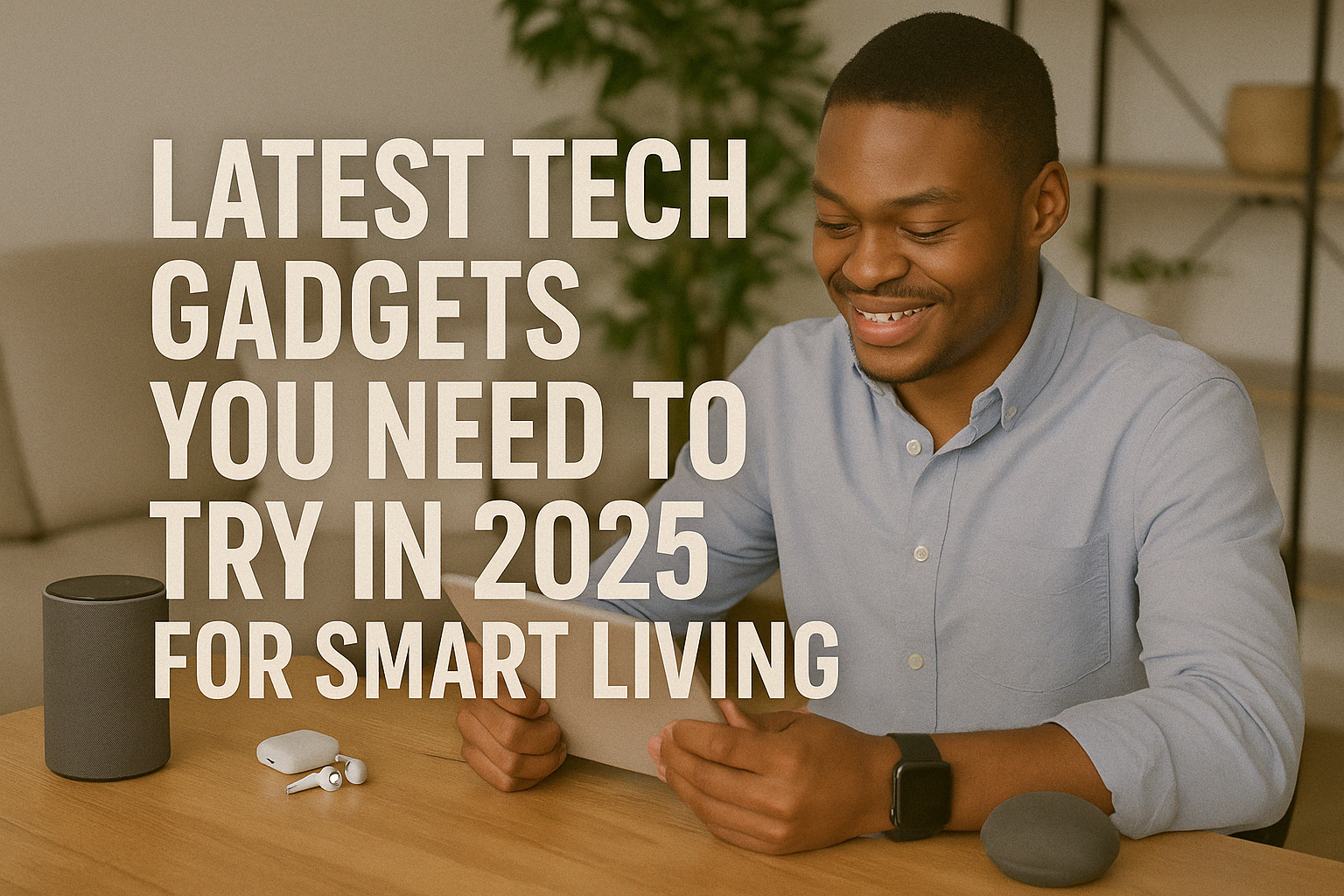
Introduction
Technology keeps changing how we live, work, and play. In 2025, smart living gadgets will be more powerful, more connected, and easier to use than ever. Whether you want a cleaner home, better health, or hands‑free entertainment, a new wave of tech gadgets can help. In this article, we’ll explore the top devices you need to try in 2025. You’ll learn what each gadget is, why it matters, and how it can fit into your daily routine. Ready to upgrade your life? Let’s dive into the future of smart home devices and personal tech.
What Is an AI-Powered Home Assistant?

Image by: Yandex.com
An AI-powered home assistant is a small device that listens to your voice and helps with tasks. Think beyond simple timers and weather reports. The 2025 models come with large screens, advanced cameras, and natural language AI. They can troubleshoot your Wi‑Fi, remind you to take medicine, or even suggest healthy recipes based on what’s in your fridge.
These assistants connect to nearly all smart home devices, from lights to security cameras. With improved privacy features, they process voice data locally, keeping your conversations secure. In 2025, an AI assistant truly feels like a live-in butler for the digital age.
What Is a Robot Vacuum with AI Mapping?

Image by: Yandex.com
A robot vacuum with AI mapping uses lasers and cameras to learn your home’s layout. Unlike older models that bump around randomly, these vacuums plan the most efficient cleaning path. They detect obstacles and even “remember” no-go zones to avoid your child’s play area or pet bowls.
Models in 2025 empty their own dustbins and recharge quickly. Some connect to your home network so you can start a deep clean from work or on your phone. For busy households, a smart vacuum means you never worry about messy floors again.
What Is a Smart Health Wearable Ring?

Image by: Yandex.com
A smart health wearable ring is a tiny, fashionable gadget you slide onto your finger. It tracks heart rate, sleep quality, blood oxygen, and even stress levels. Because it’s on your finger, readings are more accurate than wrist‑based trackers.
In 2025, rings sync with health apps to offer personalized tips. For example, if your sleep score dips, the app might suggest a 5‑minute breathing exercise at bedtime. With battery life of weeks and water resistance, these rings can be worn day and night without hassle.
What Is a Solar-Powered Smart Backpack?

Image by: Yandex.com
A solar-powered smart backpack charges your devices on the go using built‑in solar panels. Inside, a high‑capacity battery holds the energy until you plug in your phone or laptop. Some models offer wireless charging pockets and anti‑theft alarms that sync to your smartphone.
By 2025, backpacks will include GPS trackers and health sensors that measure your steps and posture. For travelers, hikers, or daily commuters, this gadget keeps you powered and connected without adding bulky power banks.
What Is Augmented Reality (AR) Smart Glasses?

Image by: Yandex.com
AR smart glasses overlay digital information onto your real‑world view. Imagine walking down the street and seeing restaurant ratings float above every door. Or following step‑by‑step recipe instructions right in your kitchen, without touching your phone.
In 2025, AR glasses are lightweight and stylish, with full‑color displays and improved battery life. They’ll support voice commands and hand gestures, making navigation, translation, and quick online searches seamless.
What Is a Smart Kitchen Assistant?
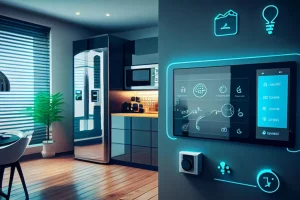
Image by: Yandex.com
A smart kitchen assistant is a countertop device that guides you through recipes, steers you away from burnt meals, and can even order groceries when you run low on staples. These assistants use AI to adjust cooking times based on humidity, altitude, and your stovetop’s power.
In 2025, models will scan barcodes on food packaging to suggest meal plans and track expiration dates. For novice cooks and seasoned chefs alike, a smart kitchen assistant turns every meal into a success story.
What Is an AI Sleep Coach Device?

Image by: Yandex.com
An AI sleep coach device sits on your bedside table and monitors your breathing, heart rate, and room noise. It gently wakes you at the optimal time in your sleep cycle to prevent grogginess.
New 2025 models offer personalized sleep plans, with guided meditations and light therapy to help you drift off faster. Data syncs with health apps so you can track improvements and identify sleep‑wrecking habits.
What Are Next‑Gen Home Automation Tools?

Image by: Yandex.com
Home automation has stepped up in 2025 with user‑friendly hubs and smart sensors. Home automation tools let you automate routines. You can set your lights to fade in at sunrise and close blinds at sunset. Smart plugs and switches let you control any appliance from an app.
Sensors for motion, temperature, and water leaks keep your home safe. If a pipe bursts, a sensor can alert you on your phone and shut off the valve automatically. Smart doorbells record visitors and stream video live.
Central hubs now offer unified dashboards. You see all connected devices in one view. Drag‑and‑drop schedules let you create scenes—like “Movie Night” that dims lights, lowers blinds, and turns on speakers. These automated scenes save time and add comfort to your daily routine.
What Is a Smart Home Security Drone?

Image by: Yandex.com
A smart home security drone patrols your property indoors or out. These drones use AI to distinguish between pets, deliveries, and strangers. If they spot something unusual, they send live video alerts and can even emit a warning sound to scare off intruders.
By 2025, drones will integrate with smart locks and cameras, creating a layered defense. You can schedule patrols or send the drone on demand via a mobile app, giving you peace of mind whether you’re at home or away.
Table: Top Tech Gadgets for Smart Living in 2025
| Gadget | Key Feature | Benefit |
|---|---|---|
| AI-Powered Home Assistant | Local voice processing | Enhanced privacy and control |
| Robot Vacuum with AI Mapping | Custom cleaning paths | Efficient, hands-free cleaning |
| Smart Health Wearable Ring | Continuous health tracking | Better sleep and stress data |
| Solar-Powered Smart Backpack | Integrated solar charging | Power on the move |
| AR Smart Glasses | Overlay digital info on real world | Improved navigation and tasks |
| Smart Kitchen Assistant | AI recipe guidance | Perfect meals, less waste |
| AI Sleep Coach Device | Sleep cycle analysis | Daytime energy boost |
| Smart Home Security Drone | Automated property patrol | Enhanced home security |
Tips for Smart Living with 2025 Tech
To get the most from these latest tech gadgets 2025, follow these tips:
- Start with your needs: Choose one gadget that solves your biggest daily hassle.
- Check compatibility: Ensure new devices work with your phone and Wi‑Fi network.
- Use energy wisely: Solar‑powered and low‑energy modes save power and cut bills.
- Secure your data: Update passwords and enable two‑factor authentication.
- Stay updated: Keep apps and firmware current to access new features and bug fixes.
Conclusion: Embrace Tech for a Smarter Life
The year 2025 brings a wave of tech gadgets that make life easier, healthier, and more secure. From AI assistants that understand your needs to solar backpacks that charge on the go, each device fits into a smart living lifestyle. By focusing on privacy, energy efficiency, and seamless user experience, these tools help you spend less time on chores and more on what matters. Choose the gadgets that solve your top pain points, integrate them carefully, and update settings regularly. Embrace these innovations to step into a truly connected, smarter way of living.
Internet and Telecom
5G vs. Wi-Fi 6: Which Is Right for Your Home 2025
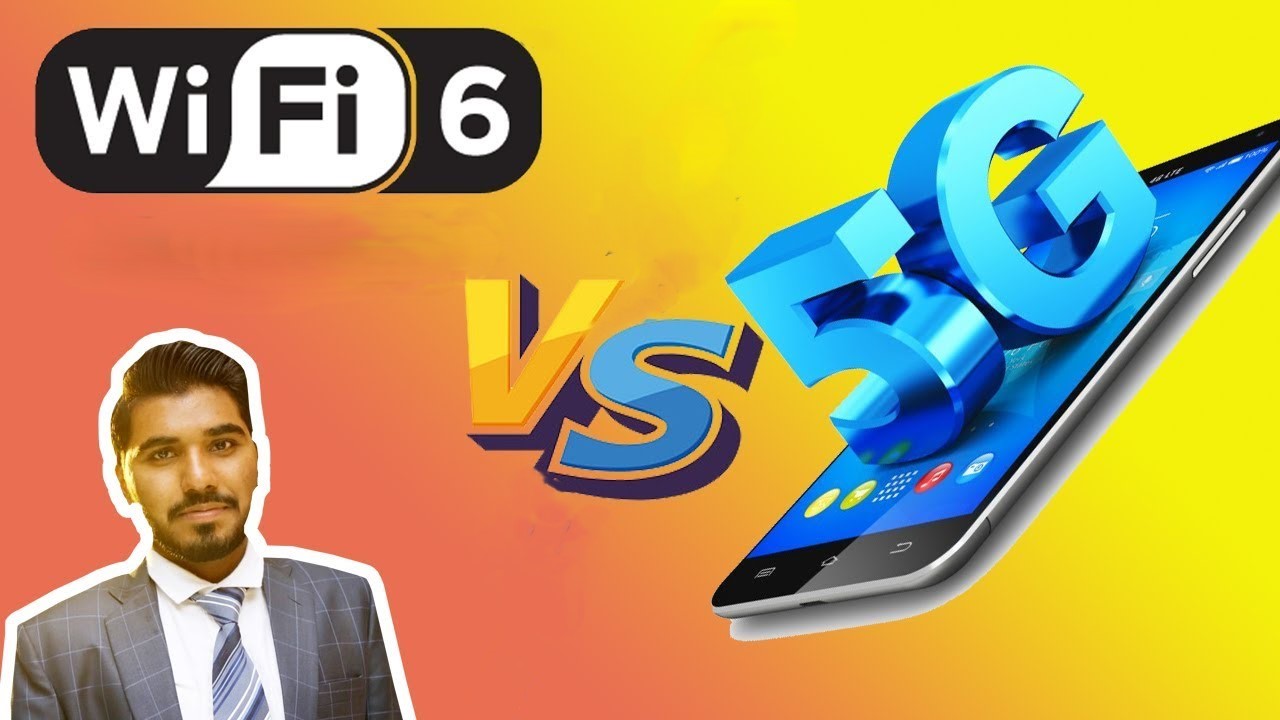
Introduction
In the fast-evolving world of technology, choosing the right internet connection is crucial for staying connected. With the rise of 5G and Wi-Fi 6, home users are faced with a choice between these two powerful technologies. But how do they compare? Which one should you choose for your home in 2025? In this article, we will explore the differences between 5G and Wi-Fi 6, how they impact your daily internet use, and which one is better for you.
What is 5G?

Image by: Yandex.com
5G is the fifth generation of mobile network technology, offering faster speeds, lower latency, and more reliable connections than previous generations like 4G. This technology is designed to support high-demand applications such as streaming, gaming, and IoT (Internet of Things) devices. 5G uses a combination of low, mid, and high-frequency bands to deliver incredibly fast internet speeds, with some areas capable of reaching speeds up to 10 Gbps.
One of the major benefits of 5G is its ability to offer high-speed internet on the go, even in crowded areas. Whether you’re at a stadium or in the middle of a busy city, 5G promises to keep your connection strong.
What is Wi-Fi 6?

Image by: Yandex.com
Wi-Fi 6, also known as 802.11ax, is the latest Wi-Fi standard designed to improve internet speeds and efficiency in crowded environments. This new standard offers several improvements over its predecessor, Wi-Fi 5 (802.11ac), including faster speeds, better range, and more stable connections. Wi-Fi 6 uses OFDMA (Orthogonal Frequency Division Multiple Access) to handle more devices simultaneously, making it ideal for homes with many connected devices like smartphones, laptops, and smart home devices.
Wi-Fi 6 also uses MU-MIMO (Multi-User, Multiple Input, Multiple Output) technology to allow multiple devices to communicate with the router at the same time, improving overall network performance. Additionally, Wi-Fi 6’s TWT (Target Wake Time) feature helps save battery life on devices, ensuring they don’t consume unnecessary power.
The Role of 5G and Wi-Fi 6 in the Future

Image by: Yandex.com
The role of 5G and Wi-Fi 6 will continue to grow as more devices become connected to the internet. 5G is designed to work well in a world where smartphones, smart home devices, and even cars need constant, high-speed internet. This will play a huge role in the future of smart cities, where 5G will enable rapid data sharing between various technologies. Similarly, Wi-Fi 6 will ensure that home networks can support all the new smart devices, from smart speakers to security cameras, without affecting the quality of the connection. As we move forward, both technologies will play an important role in keeping us connected in our homes, workplaces, and even in the cities we live in.
5G vs. Wi-Fi 6: Key Differences

Image by: Yandex.com
1. Speed and Performance
5G offers incredibly fast speeds, with potential download speeds of up to 10 Gbps in ideal conditions. It’s ideal for activities that require constant high-speed connections, like 4K streaming, gaming, and virtual reality.
Wi-Fi 6 offers speeds of up to 9.6 Gbps, but its true strength lies in its ability to support more devices simultaneously without slowing down. This makes it ideal for households with many connected devices.
2. Range and Coverage
5G provides wide-area coverage, ideal for users who need to stay connected while moving around or when traveling. However, 5G networks require a close connection to a 5G tower for optimal speeds.
Wi-Fi 6 operates in smaller areas, typically limited to your home or office. Its range is limited by the router’s power and the size of your home, but it offers reliable connections within its range.
3. Latency
5G has ultra-low latency, meaning there’s minimal delay between sending and receiving data. This makes it perfect for real-time applications like gaming, video calls, and augmented reality.
Wi-Fi 6 also has low latency but is generally designed for less time-sensitive applications.
4. Device Capacity
5G can support a large number of devices simultaneously without slowing down, making it a great choice for smart cities and crowded areas.
Wi-Fi 6 shines in homes with many devices. It uses technologies like OFDMA and MU-MIMO to allow multiple devices to operate simultaneously without interference.
Which One Is Right for Your Home?

Image by: Yandex.com
Choosing between 5G and Wi-Fi 6 depends on your specific needs and home setup. Here are a few considerations:
-
For High-Speed Internet On the Go: If you need fast and reliable internet outside of your home, 5G is the way to go. It’s perfect for those who travel frequently or live in areas where traditional broadband is not available.
-
For Multiple Devices at Home: If you have a lot of devices connected at home, Wi-Fi 6 is likely your best option. It ensures that each device gets optimal performance without causing congestion or lag.
-
For Low Latency Activities: If you play online games, stream videos, or use applications that require low latency, 5G provides a superior experience with minimal delay.
-
For Reliable Home Network: If you’re looking for a stable and efficient home network for things like working from home, video calls, and IoT devices, Wi-Fi 6 will offer more consistent performance over time.
Challenges Facing 5G and Wi-Fi 6
Despite their benefits, 5G and Wi-Fi 6 come with their own set of challenges. For 5G, one of the biggest hurdles is the lack of widespread coverage. While 5G is available in some areas, it is still being rolled out in others, meaning that many people cannot yet access its full potential. Wi-Fi 6, on the other hand, requires a new router that supports this technology, and not all devices are compatible with it just yet. Both technologies also come at a higher price, with new devices and routers often costing more than older models. Overcoming these challenges will be essential for making 5G and Wi-Fi 6 more accessible to everyone in the coming years.
The Future of 5G vs. Wi-Fi 6: Which Is Right for Your Home in 2025?

Image by: Yandex.com
Looking ahead to 2025, both 5G and Wi-Fi 6 will continue to evolve. As coverage for 5G improves and more devices become compatible, it will become an even more attractive option for people who need fast internet on the go. For those looking to improve their home network, Wi-Fi 6 will be the go-to choice, providing the speed and efficiency needed to handle a growing number of connected devices. Whether you choose 5G or Wi-Fi 6, both technologies will offer better experiences in the future, but the right choice for your home will depend on your needs.
Comparative Table: 5G vs. Wi-Fi 6 Advantages and Disadvantages
| Feature | 5G | Wi-Fi 6 |
|---|---|---|
| Speed | Extremely fast (up to 10 Gbps) | Fast (up to 9.6 Gbps) |
| Range | Wide-area coverage | Limited to home/office range |
| Latency | Ultra-low | Low |
| Device Capacity | Supports many devices | Ideal for multiple devices |
| Best For | Mobility, high-speed internet | Home networks, multiple devices |
| Installation | Requires network coverage | Requires a Wi-Fi 6 router |
Conclusion
Both 5G and Wi-Fi 6 offer incredible advancements in internet technology, but which one is right for you depends on your needs. If you’re looking for high-speed internet that can keep up with your mobile lifestyle, 5G is a great choice. However, if you have multiple devices at home and need a reliable and fast Wi-Fi network, Wi-Fi 6 is the best option for you. Consider your home’s internet usage, the number of devices, and your mobility needs when deciding between the two.
Call to Action
If you’re ready to upgrade your home network, consider Wi-Fi 6 for a stable and fast connection. Or, if you’re always on the move, 5G could be your ideal solution. Explore more about both technologies and make the right choice for your home today!
Technology
Electric SUVs Leading the Market in 2025
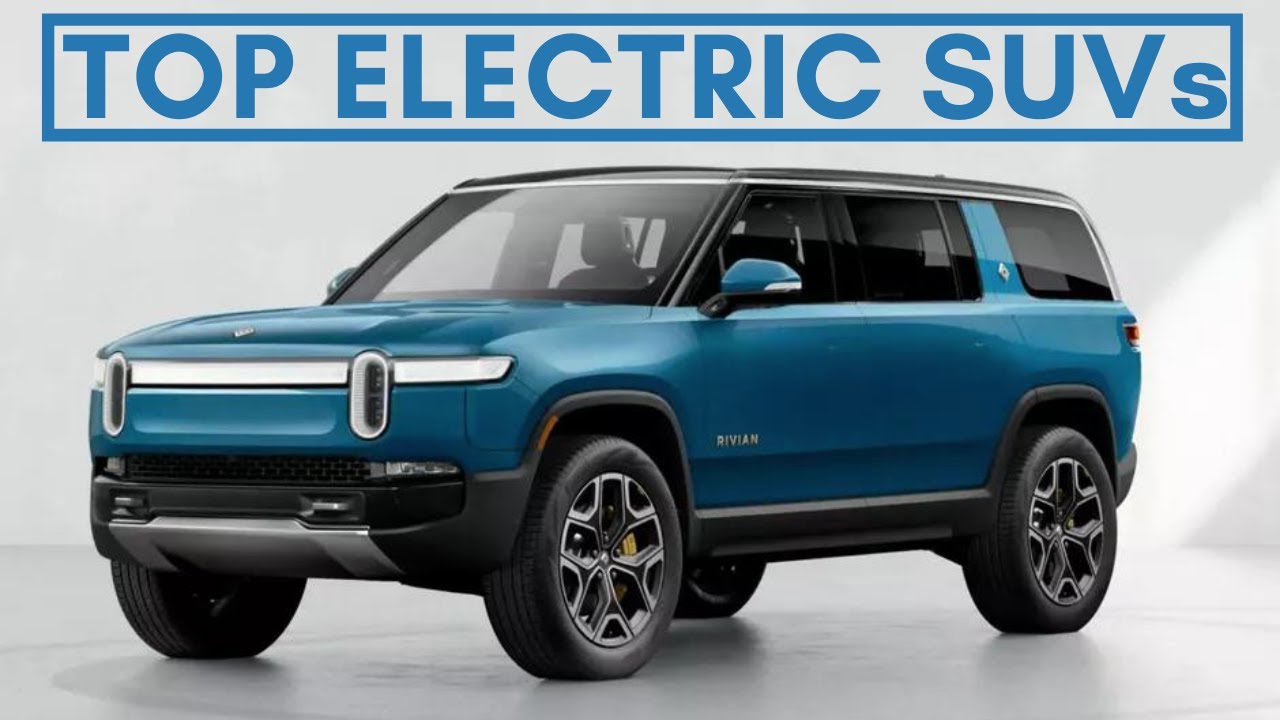
Introduction
In recent years, the demand for electric vehicles (EVs) has surged, with eco-conscious consumers seeking more sustainable alternatives to traditional gasoline-powered cars. One segment of the electric vehicle market that has gained tremendous popularity is electric SUVs. As we move into 2025, electric SUVs are leading the way with innovative features, powerful performance, and impressive range capabilities.
Whether you’re looking for a family-friendly ride, a rugged off-roading experience, or a stylish city vehicle, the electric SUV market has something for everyone. In this article, we’ll explore the electric SUVs making a significant impact in 2025. From performance and design to affordability and technology, we’ll look at the top models leading the market.
What is an Electric SUV?

Image by: Yandex.com
An electric SUV is a sport utility vehicle powered by an electric motor rather than a gasoline engine. These vehicles run entirely on electricity, stored in high-capacity batteries, and are recharged through electric charging stations or home charging setups. Unlike traditional SUVs that rely on internal combustion engines, electric SUVs produce zero emissions, making them an environmentally friendly option for drivers.
As battery technology continues to improve, electric SUVs are becoming more practical and affordable, with extended driving ranges and shorter charging times. The electric SUV market is rapidly growing as consumers look for versatile, eco-friendly vehicles that offer both power and luxury.
Top Electric SUVs Leading the Market in 2025
As 2025 unfolds, several electric SUVs have set the standard for innovation, design, and performance. Below, we’ll take a closer look at some of the top models that are leading the market this year.
1. Tesla Model X
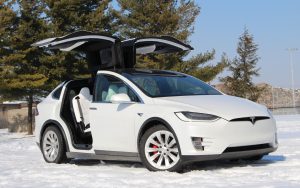
Image by: Yandex.com
The Tesla Model X remains one of the most popular and advanced electric SUVs on the market. Known for its iconic falcon-wing doors and cutting-edge technology, the Model X continues to impress with its top-tier performance and long-range capabilities. Tesla’s Autopilot system provides semi-autonomous driving, making long drives safer and more convenient.
The Model X is powered by dual electric motors and offers a range of up to 350 miles on a full charge, making it an excellent choice for long-distance travelers. With a spacious interior that seats up to seven people, it’s a great option for families looking for both luxury and performance.
Key Features:
- 0 to 60 mph in 2.5 seconds
- 350 miles of range
- Spacious cabin with advanced tech features
2. Ford Mustang Mach-E

Image by: Yandex.com
The Ford Mustang Mach-E is another standout in the electric SUV market. This all-electric vehicle combines the thrill of the Mustang brand with the practicality of an SUV. With a sleek design and a variety of performance options, the Mach-E appeals to both traditional SUV lovers and those new to electric vehicles.
The Mach-E offers impressive range options, with the extended-range model reaching up to 300 miles on a single charge. It also provides fast-charging capabilities, allowing drivers to charge the vehicle up to 80% in just 45 minutes.
Key Features:
- Range of up to 300 miles
- Fast-charging capability
- Available in several performance trims, including the high-performance GT model
3. Rivian R1S

Image by: Yandex.com
The Rivian R1S is a bold entry into the electric SUV market, offering both luxury and off-road capability. This all-electric vehicle is designed for adventure, with rugged features and a towing capacity of up to 7,700 pounds. Whether you’re navigating rough terrain or cruising down the highway, the Rivian R1S delivers an exceptional driving experience.
With a range of up to 400 miles and an innovative electric all-wheel-drive system, the R1S is ideal for those seeking an electric SUV that can handle the toughest conditions while offering the latest in technology and comfort.
Key Features:
- Up to 400 miles of range
- Towing capacity of 7,700 pounds
- Advanced off-road capabilities with a customizable ride height
4. Hyundai Ioniq 5

Image by: Yandex.com
The Hyundai Ioniq 5 is a sleek, futuristic-looking electric SUV that combines innovative design with cutting-edge technology. This SUV stands out with its ultra-modern interior and high-tech features, including a digital cockpit, wireless charging, and advanced driver-assistance systems.
The Ioniq 5 offers an impressive range of up to 300 miles and features fast charging, enabling it to charge from 10% to 80% in just 18 minutes. With its spacious interior and practical design, the Ioniq 5 is perfect for families or anyone looking for an affordable yet stylish electric SUV.
Key Features:
- 300 miles of range
- 18-minute fast charging
- Spacious, high-tech interior
5. Audi Q4 e-Tron

Image by: Yandex.com
The Audi Q4 e-Tron is Audi’s first compact electric SUV, and it delivers the luxury and performance the brand is known for. This electric SUV combines smooth handling with a sophisticated design, offering a premium driving experience. With a range of up to 250 miles, the Q4 e-Tron is perfect for daily commutes and weekend getaways.
Audi’s MMI touch response system provides an intuitive interface for controlling vehicle functions, while advanced safety features like adaptive cruise control and lane-keeping assist help keep you safe on the road.
Key Features:
- Up to 250 miles of range
- Premium interior with advanced tech features
- Smooth handling and responsive driving experience
Why Electric SUVs Are the Future of the Automobile Industry
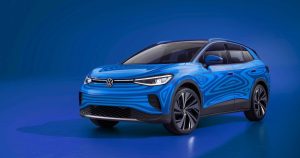
Image by: Yandex.com
The rise of electric SUVs is reshaping the automotive industry, and several factors are driving this shift. First and foremost, the push for environmental sustainability is a key motivator. Electric SUVs produce zero emissions, reducing the carbon footprint and helping to combat climate change.
Additionally, advancements in battery technology have made electric SUVs more affordable and practical than ever. With longer driving ranges, faster charging times, and more accessible charging stations, electric vehicles are becoming a viable option for everyday drivers.
Furthermore, governments worldwide are offering incentives and rebates to encourage the adoption of electric vehicles. This, combined with the growing availability of electric SUVs at various price points, makes it easier for consumers to make the switch to eco-friendly transportation.
Conclusion
As we head into 2025, electric SUVs are becoming the driving force behind the shift to cleaner, more sustainable transportation. With impressive models like the Tesla Model X, Ford Mustang Mach-E, Rivian R1S, Hyundai Ioniq 5, and Audi Q4 e-Tron, consumers now have a wide variety of options to choose from, each offering unique features and performance.
Whether you’re looking for a family-friendly ride, a performance-driven vehicle, or an off-road adventure, there’s an electric SUV for you. As battery technology continues to improve and infrastructure for charging expands, electric SUVs will only become more accessible and practical for everyday use.
-
Business2 years ago
Cybersecurity Consulting Company SequelNet Provides Critical IT Support Services to Medical Billing Firm, Medical Optimum
-
Business2 years ago
Team Communication Software Transforms Operations at Finance Innovate
-
Business2 years ago
Project Management Tool Transforms Long Island Business
-
Business2 years ago
How Alleviate Poverty Utilized IPPBX’s All-in-One Solution to Transform Lives in New York City
-
health2 years ago
Breast Cancer: The Imperative Role of Mammograms in Screening and Early Detection
-
Sports2 years ago
Unstoppable Collaboration: D.C.’s Citi Open and Silicon Valley Classic Unite to Propel Women’s Tennis to New Heights
-
Art /Entertainment2 years ago
Embracing Renewal: Sizdabedar Celebrations Unite Iranians in New York’s Eisenhower Park
-
Finance2 years ago
The Benefits of Starting a Side Hustle for Financial Freedom
































